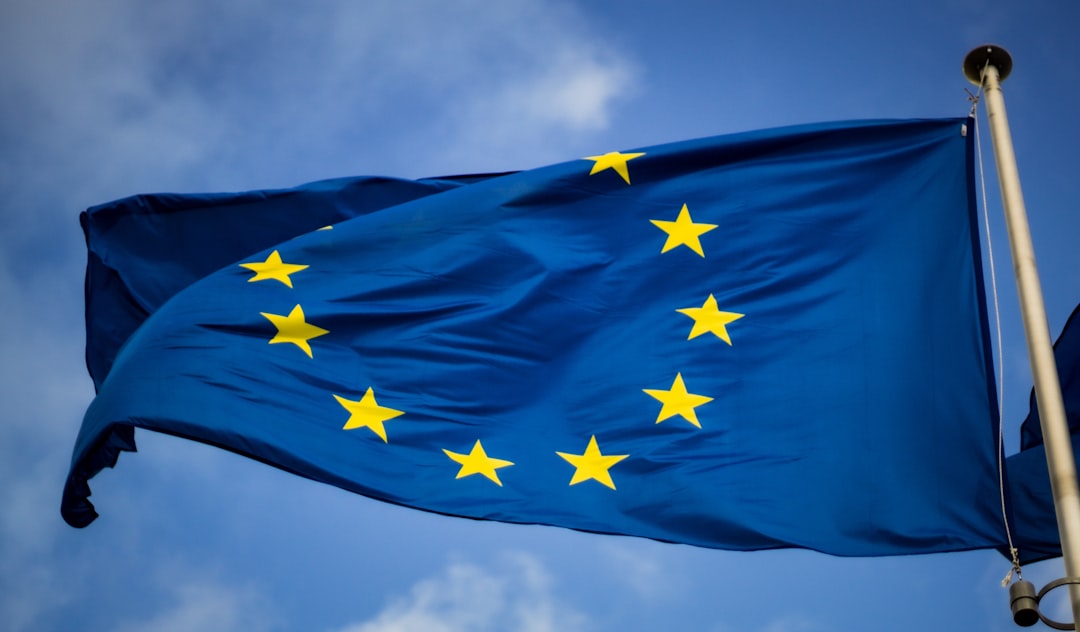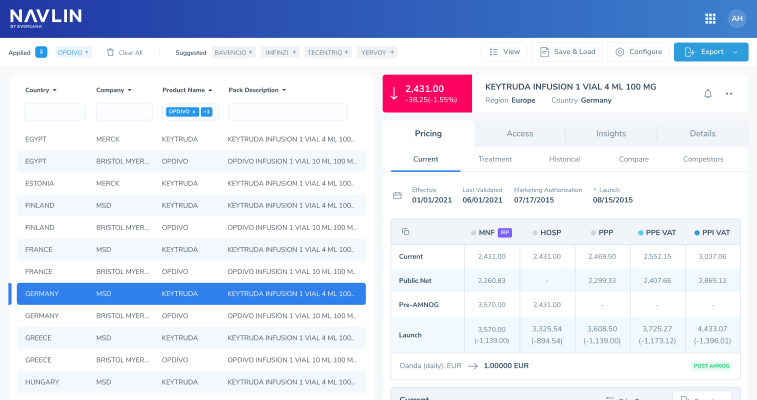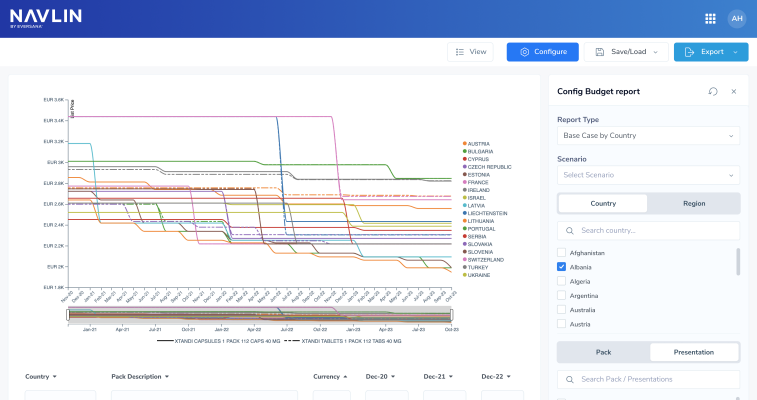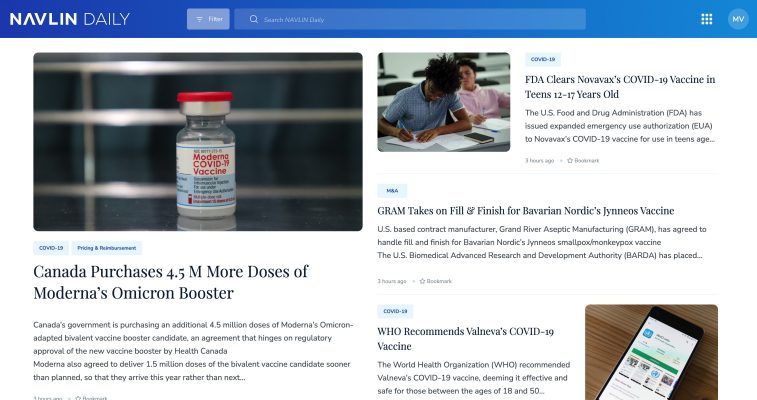NAVLIN Daily NewsCheckout Today’s News
The Trump administration announced Most Favored Nation (MFN) drug pricing deals with nine additional pharmaceutical companies, including Amgen, Bristol Myers Squibb, Boehringer Ingelheim, Genentech, Gilead Sciences, GSK, Merck, Novartis, and SanofiThe companies will join Pfizer, AstraZeneca, EMD Serono, Eli Lilly, and Novo Nordisk, who have already struck deals with the administration over the past few monthsThe new agreements appear to mirror the previous five, with a focus on: offering products at MFN pricing through Medicaid; commitments to set prices on new drugs launched in the U.S. at no more than prices in other wealthy countries; offering certain medications at a significant discount through direct-to-patient (DTP) models; and promises to invest billions in U.S. manufacturing and research
From everyone at EVERSANA and NAVLIN Daily, we wish you happy holidays & warm wishes for a healthy new year! Due to the holidays, from Monday our news will be taking a break until the new year. We will resume posting as normal on Friday, January 2.
More pharmaceutical companies are expected to announce Most Favored Nation (MFN) drug pricing deals with the Trump administration on Friday, December 19According to reports from Reuters, around five companies—including AbbVie, Novartis, and Roche—are set to enter into these agreementsReuters notes that the administration is also expected to reveal further details about the new GENEROUS Model, which allows manufacturers to voluntarily offer MFN prices through Medicaid

The European Commission’s recently announced Biotech Act I has received mixed reactions from industry, as groups warn that extending supplementary protection certificates would delay competition, increase healthcare costs and fail to boost EU R&D, while urging stronger competition rules, harmonized Bolar exemptions and legal certainty for day-one market entry after patent expiryAs reported earlier, the European Commission announced an omnibus combining the Biotech Act I, reforms to medical device regulations, and a first-ever EU cardiovascular health strategy. During the announcement, Health Commissioner Olivér Várhelyi announced the introduction of an additional year of patent protection, via an extension of supplementary protection certificates, for biotechnological products that are invented, tested and manufactured in Europe. The Commission argues that the incentive is designed to anchor innovation and production within the EU, ensuring European patients benefit first from breakthrough therapiesHowever, Biosimilar Medicines Group underlined the financial implications of delayed competition by pointing to blockbuster oncology medicines. “A simulation shows that for just three cancer blockbuster drugs (Keytruda (pembrolizumab) / Darzalex (daratumumab) / Opdivo (nivolumab)) each year of delayed competition would cost healthcare systems EUR 7.7 billion,” it stated
Dolors Montserrat MEP, the rapporteur for the Pharmaceutical Directive, has shared that the new EU drug launch obligation under the pharma package will take effect in January 2027Assuming the Plenary Session of the European Parliament will approve the pharmaceutical package in January 2026, other aspects of the EU pharmaceutical package will likely not become operational until January 2028 to allow time for implementationAccording to reports from a meeting with specialist media, she explained: “When a medicine is approved, any country can request it from the company. If, after one year, it has not been made available, there are two possible mechanisms: the Commission asks the company to make it available on that market through an agreement. If it does not, the industry will lose market protection in that country, and generics and biosimilars can be marketed.”
The European Parliament’s public health committee has approved its proposals on the Critical Medicines Act (CMA), advancing legislation intended to strengthen Europe’s security of supply for essential medicines. Parliament’s position is expected to be adopted during the January 2026 plenary session, after which negotiations with EU governments can beginEarlier this month, the EU Council adopted its position, which introduced measures such as; a requirement for the Commission to issue guidance, including to help Member States determine whether a critical medicine or active ingredient has been produced in the EU, and an obligation to use criteria relating to resilience in the public procurement of critical medicinesHowever, both the Council and Parliament’s proposals have been met with criticism, as EUCOPE underscores that “the proposed measures will not solve the fundamental barriers to patient access, mostly related to national competence”
Two additional medicines have been newly added to the list of medicines undergoing a Joint Clinical Assessment (JCA) under the EU Health Technology Assessment Regulation (EU 2021/2282), which has been in effect across Europe since January 12, 2025The ongoing EU JCA list now includes ensartinib for ALK-positive advanced non-small cell lung cancer (NSCLC) and the orphan drug zopapogene imadenovec for respiratory papillomatosisSixteen HTA agencies are serving as assessors or co-assessors across the first 12 JCAs, with Germany’s IQWiG leading the highest number of assessments

The Council of the European Union and the European Parliament have reached a political agreement on the long-awaited pharma package, a reform of EU pharmaceutical rules aimed at improving patient access to medicines while strengthening Europe’s drug industry. The deal remains provisional and must still be formally endorsed by both institutions. Once adopted, the legislation will take effect upon publication in the EU’s Official JournalAs reported, under the Danish Presidency there were two rounds of political trilogues with the Parliament and 23 technical meetings. However, both ended in stalemates. It was then announced a third and final trilogue would be held which has now ended in consensus“We are strengthening incentives for priority antibiotics, reducing red tape for the life science industry, and safeguarding the availability of essential medicines,” Sophie Løhde, Danish Minister for the Interior and for Health. “The package marks a crucial step towards making a more resilient and dynamic life science sector in Europe, and it shows that Europe is able to make the necessary decision to protect European interests”
The UK has set the 2026 payment rate for newer medicines under the VPAG scheme at 14.5%, a drop from a record 22.5% in 2025 and less than the 15% announced in the recent UK-U.S. trade dealCompanies still have until December 16 to decide whether to join VPAG or face a higher 24.3% rate under the Statutory SchemeThe payment rate depends on NHS demand for newer drugs exceeding its budget, with pharma companies covering the gap. An extra 1% will go toward improving the UK’s life sciences infrastructure in 2026

China’s National Healthcare Security Administration (NHSA) has finalized the National Reimbursement Drug List (NRDL) for 2026, adding 114 new drugs, including 50 Class 1 innovative products. The NRDL now lists 3,253 drugs (1,857 are Western medicines). A separate Commercial Insurance Innovative Drug List debuts with 19 high-cost, innovative drugs that address rare and unmet needs, effective January 2026The new commercial insurance drug list includes cutting-edge therapies like CAR-T and medications for Alzheimer’s, neuroblastoma, and multiple myeloma. These drugs cater to smaller, specific populations and feature lower price cuts (15–50%) compared to NRDL’s average 60%, allowing insurance innovation while easing pressure on state resources and expanding treatment access incrementallyThe commercial list serves as a stepping stone for drugs to enter the NRDL, enabling insurers to create tailored plans for advanced treatments outside the standard insurance scope. Mounjaro (tirzepatide), Eli Lilly’s diabetes drug, joined the NRDL, challenging Novo Nordisk’s Ozempic and potentially reshaping GLP-1 drug pricing in China

















